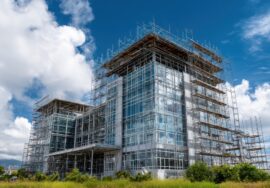Biophilic Architecture: Merging Nature with Design
Biophilic Architecture: Merging Nature with Design
Introduction
Biophilic architecture is an innovative approach to design that integrates nature into the built environment. By incorporating natural elements such as plants, water, sunlight, and organic materials, this design philosophy enhances well-being, boosts productivity, and promotes sustainability. As cities become more urbanized, biophilic architecture offers a way to reconnect with nature while improving energy efficiency and reducing environmental impact.
Key Principles of Biophilic Architecture
1. Natural Light and Ventilation
- Large windows, skylights, and open spaces maximize natural light and airflow.
- Reduces dependence on artificial lighting and HVAC systems, improving energy efficiency.
2. Green Spaces and Vegetation
- Green roofs, vertical gardens, and indoor plants improve air quality and aesthetics.
- Urban biodiversity is enhanced by integrating green landscapes within buildings.
3. Use of Natural Materials
- Wood, bamboo, stone, and recycled materials create a tactile connection with nature.
- Enhances sustainability by reducing synthetic material use and carbon footprint.
4. Water Elements
- Incorporating fountains, waterfalls, and reflective pools promotes tranquility and relaxation.
- Helps in natural cooling and improves indoor humidity balance.
5. Organic and Biomorphic Design
- Curved forms, natural patterns, and biomimicry-inspired structures mimic the organic beauty of nature.
- Creates a harmonious and soothing environment for occupants.
Benefits of Biophilic Architecture
Environmental Benefits
- Improved air quality due to plants filtering pollutants.
- Energy savings through passive design strategies.
- Reduced urban heat island effect with green roofs and walls.
Psychological and Health Benefits
- Reduced stress and increased focus in biophilic spaces.
- Better indoor air quality leading to fewer respiratory problems.
- Enhanced creativity and productivity in workplaces and learning environments.
Economic Benefits
- Higher property value due to sustainable and attractive design.
- Lower maintenance costs with durable, natural materials.
- Energy savings from optimized natural light and ventilation.

Examples of Biophilic Architecture in India
- The Orchid Tower, Mumbai – Features vertical gardens, maximizing green space in an urban setting.
- Indian Institute of Management, Bangalore – A campus built with lush greenery, water bodies, and open spaces.
- Infosys Campus, Mysore – Incorporates sustainable design with green landscapes and natural light optimization.
Future Trends in Biophilic Architecture
1. Smart Green Buildings
- Integration of IoT and AI for automated climate control.
- Smart irrigation systems for efficient water use in vertical gardens.
2. Net-Zero Biophilic Designs
- Use of renewable energy sources like solar and wind.
- Development of carbon-neutral buildings with sustainable materials.
3. Urban Biophilic Spaces
- Incorporation of living walls, rooftop gardens, and urban forests.
- Encouraging community-driven green initiatives in urban areas.
Conclusion
Biophilic architecture is not just a design trend but a necessity for creating sustainable and health-conscious spaces. By merging nature with built environments, we can foster well-being, enhance energy efficiency, and promote ecological balance. Investing in biophilic design is an investment in a healthier, greener future.
For expert guidance on sustainable architecture, contact us today.
External References:
Construction Industry in India
- One of India’s largest construction and engineering companies, Campus Construction Cost Optimization provides services including project management, cost control, and engineering consultancy. For detailed information on their offerings, visit. Construction Industry in India
Read more related articles to enhance your knowledge and make informed decisions
10 Essential Steps in the Building Construction Process
How to Choose the Right Materials for Your Construction Project









